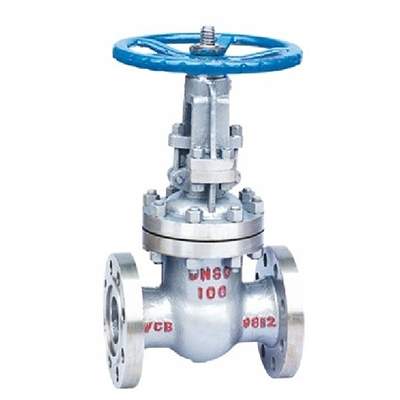Welcome to My Blog!
Before we dive into the content, if you’re interested in our products or have any questions, please feel free to visit our Contact Us page on the website. Our team is ready to assist you with inquiries, orders, or any support you may need.
Now, let’s get started on our journey together. I hope you find the content here insightful, engaging, and valuable.
Introduction

Low temperature gate valves are essential components in liquefied natural gas (LNG) systems and other cryogenic applications, engineered to handle extremely low temperatures while maintaining operational reliability. Unlike standard gate valves, which may become brittle or leak under cryogenic conditions, low temp gate valves are designed to withstand temperatures as low as -196°C (-320°F).
These valves are critical for regulating the flow of cryogenic fluids such as LNG, liquid nitrogen (LN2), and liquid oxygen (LOX). They prevent leaks, ensure pressure stability, and maintain system integrity, which is vital for industrial safety and operational efficiency.
The importance of low temp gate valves extends beyond LNG pipelines. They are widely used in chemical processing, petrochemical plants, and aerospace fuel systems where precise flow control, safety, and durability are mandatory. Their robust design minimizes thermal contraction and prevents stress fractures, reducing maintenance costs and downtime.
Understanding the differences between low temperature and standard gate valves is crucial for engineers and procurement teams. While conventional valves may fail at low temperatures, low temp gate valves maintain sealing integrity, smooth operation, and long-term reliability, ensuring safety and efficiency in critical systems.
Key Features and Design of Low Temp Gate Valves
Sealing Performance and Material Selection
The sealing performance of a low temp gate valve is one of its most important characteristics. Materials such as stainless steel, nickel alloys, and cryogenically treated carbon steel are commonly used for their strength and low-temperature resilience. Seals may be metal-to-metal or soft-seated, depending on the application, ensuring leak-free operation under both high pressure and cryogenic conditions.
Advanced designs may include double-seated or bellows-sealed configurations to prevent leakage and minimize the risk of contamination. These valves are also often designed with extended stems to reduce heat transfer and maintain proper operation in extreme cold.
Structural Design for Cryogenic Temperatures
Low temp gate valves are engineered to handle thermal contraction and expansion caused by extreme cold. Precision-machined components, such as discs, stems, and seats, are designed to move smoothly even at cryogenic temperatures. Some designs include thermal insulation and special coatings to prevent brittleness and corrosion over time.
Pressure Ratings and Temperature Ranges
These valves are available in a wide range of pressure ratings, making them suitable for pipelines with low to ultra-high pressures. The temperature range of low temp gate valves ensures safe operation in LNG, LOX, LN2, and other cryogenic systems. Understanding the valve’s pressure and temperature limitations is essential for proper selection and safe operation.
Applications of Low Temp Gate Valves in LNG Systems
Role in Liquefied Natural Gas (LNG) Pipelines
In LNG pipelines, low temp gate valves regulate the flow of cryogenic fuel efficiently and safely. Proper valve operation maintains consistent pressure, prevents leaks, and optimizes energy efficiency. These valves are critical for ensuring both operational safety and regulatory compliance in LNG storage and transport.
Cryogenic Liquid Handling (Liquid Nitrogen, Liquid Oxygen)
Low temp gate valves are also widely used in liquid nitrogen and liquid oxygen systems. In these applications, maintaining the integrity of the valve seal is vital to prevent gas leaks, frost formation, and potential safety hazards. Proper valve selection ensures safe handling of extremely cold liquids in laboratories, industrial facilities, and hospitals.
Case Studies from Petrochemical and Aerospace Industries
In petrochemical plants, low temp gate valves are used to manage cryogenic chemicals and maintain precise flow control. Aerospace fuel systems rely on these valves to safely regulate liquid rocket fuels at extremely low temperatures. In both industries, the use of high-quality low temp gate valves reduces maintenance requirements and improves overall system reliability.
Installation Guidelines for Low Temp Gate Valves
Step-by-Step Installation Process
Proper installation is key to long-term valve performance. Begin by inspecting all components for damage or defects. Clean the valve and pipeline thoroughly, remove debris, and follow manufacturer specifications for alignment and torque. Misalignment during installation can lead to leaks, increased wear, and operational failure.
Safety Precautions During Installation
Cryogenic systems pose unique hazards. Always wear protective gear, including gloves and face shields, to prevent frostbite or burns from liquid contact. Ensure the pipeline is depressurized and free of residual cryogenic fluids before beginning installation.
Common Installation Mistakes to Avoid
Common mistakes include over-tightening bolts, incorrect stem alignment, and using incompatible materials. These errors can lead to valve leakage, premature wear, or even catastrophic failure. Following installation protocols strictly is essential for safety and reliability.
Maintenance and Troubleshooting
Routine Inspection and Maintenance Tips
Regular inspections of low temp gate valves are critical. Check for corrosion, cracks, or damage caused by thermal stress. Ensure stems and seals are lubricated if required, and replace worn components promptly.
Common Issues and How to Fix Them
Typical issues include minor leaks, sticking valves, or seat wear. Minor leaks can often be addressed by adjusting packing or replacing gaskets. Valves that stick may need lubrication or mechanical adjustment, while worn seats may require replacement to maintain proper sealing.
Extending the Lifespan of Low Temp Gate Valves
Proper operation within recommended pressure and temperature ranges, avoidance of rapid pressure fluctuations, and adherence to a maintenance schedule significantly extend the life of a low temp gate valve. Preventive maintenance is key to avoiding costly downtime in LNG and cryogenic systems.
Performance Testing and Standards Compliance
Testing Methods for Cryogenic Conditions
Low temp gate valves undergo rigorous hydrostatic, cryogenic, and leak tests to ensure they can withstand extreme conditions. These tests simulate real-world conditions in LNG pipelines and other cryogenic systems, confirming reliability before installation.
Industry Standards and Certifications to Meet
Compliance with standards such as API 600, ASME B16.34, ISO 21013, and other international certifications is critical. These standards verify material quality, design integrity, and operational safety, giving operators confidence in system performance.
Ensuring Reliability and Safety in LNG Systems
Rigorous testing and adherence to standards reduce operational risks, prevent accidents, and ensure continuous safe operation. Regular audits and re-certifications maintain long-term compliance and system integrity.
Buying and Selecting the Right Low Temp Gate Valve

Factors to Consider: Material, Pressure, and Temperature
Material selection is crucial for cryogenic applications. Stainless steel, nickel alloys, and specialized carbon steel are commonly used. Pressure and temperature ratings must match system requirements, and chemical compatibility must be verified to prevent corrosion or failure.
Comparing Suppliers and Price Ranges
Evaluate suppliers based on certifications, quality assurance processes, delivery timelines, and after-sales support. Investing in high-quality valves upfront reduces maintenance costs and increases system reliability.
Conclusion
Low temperature gate valves are indispensable for LNG systems and other cryogenic applications. Their robust design, advanced materials, and compliance with rigorous industry standards ensure safe, reliable, and efficient operation.
By understanding valve features, proper installation practices, maintenance requirements, and procurement considerations, engineers and operators can optimize performance, reduce risk, and extend the lifespan of critical cryogenic infrastructure.
FAQ
What is a low temp gate valve?
A low temp gate valve is a specialized valve designed to operate safely in extremely low temperatures, typically used in LNG, liquid nitrogen, and liquid oxygen systems. It ensures leak-free flow control in cryogenic applications.
How does a low temp gate valve differ from a standard gate valve?
Unlike standard gate valves, low temp gate valves are made from materials that resist brittleness at cryogenic temperatures and feature specialized seals and stems to maintain performance and safety.
Where are low temp gate valves commonly used?
They are widely used in LNG pipelines, petrochemical plants, aerospace fuel systems, and other cryogenic liquid applications where precise flow control and safety are critical.
How should a low temp gate valve be maintained?
Regular inspection of seals, stems, and valve bodies, proper lubrication, and adherence to recommended operating temperatures and pressures help prolong the valve’s lifespan and ensure reliable operation.
What factors should be considered when purchasing a low temp gate valve?
Key factors include material compatibility with the cryogenic fluid, pressure and temperature ratings, compliance with industry standards, and supplier reliability and certification.
Need Help Choosing the Right Low Temp Gate Valve?
If you’re unsure which low temp gate valve is best for your LNG system or cryogenic application, our experts are here to guide you. Contact us today for a personalized consultation, and ensure your system operates safely and efficiently. Don’t wait until issues arise—get in touch now to protect your equipment and maintain operational reliability!
